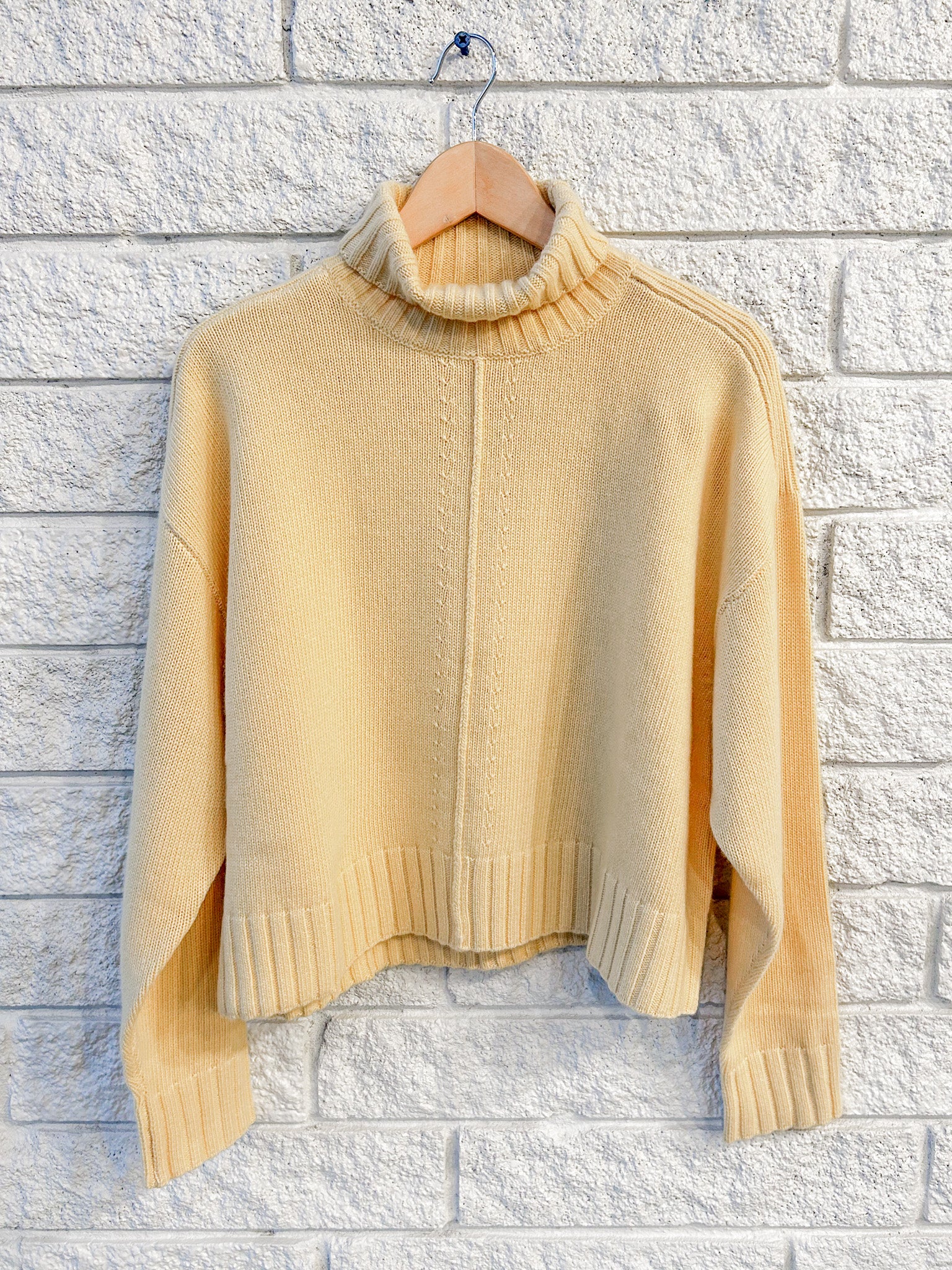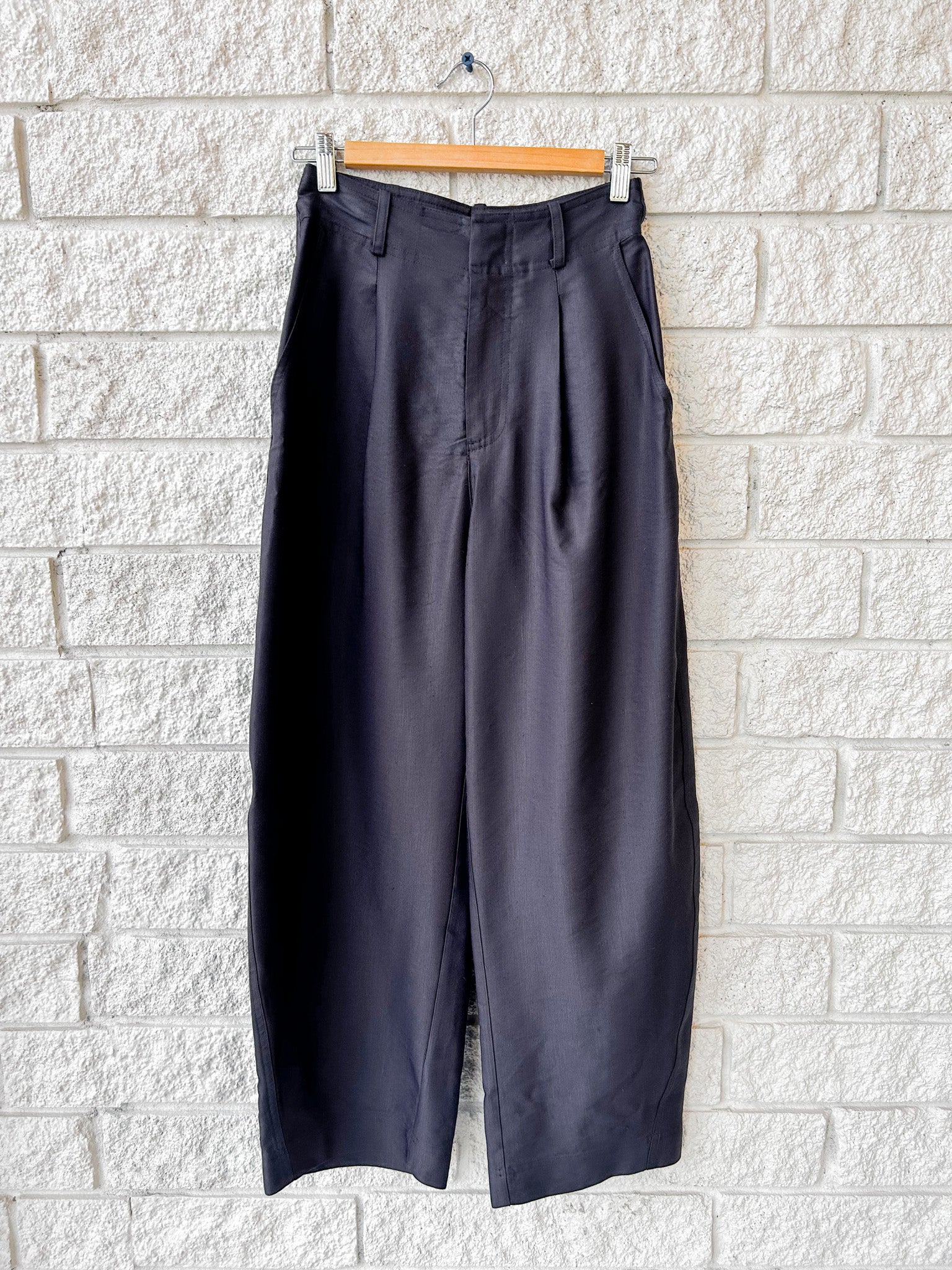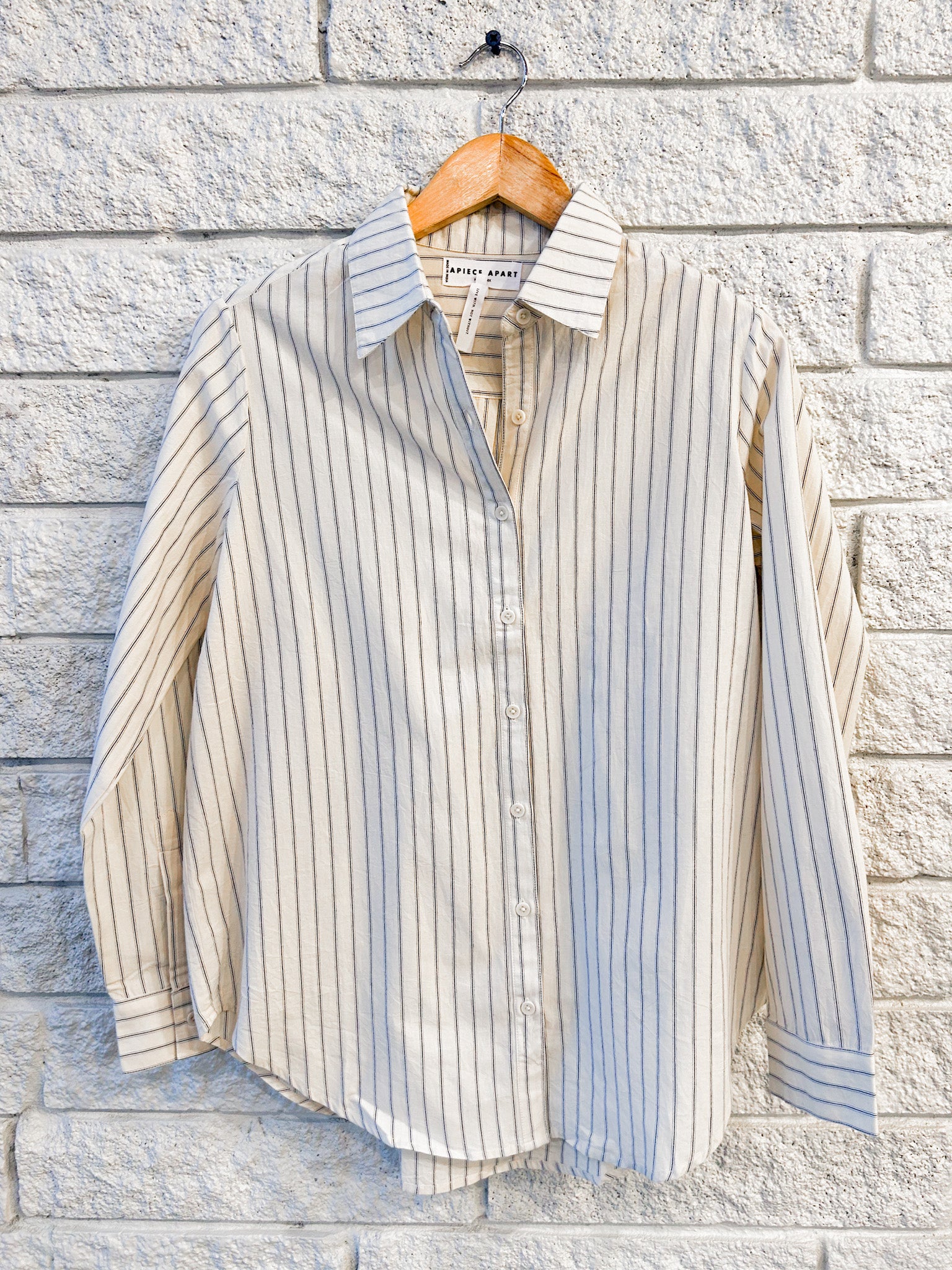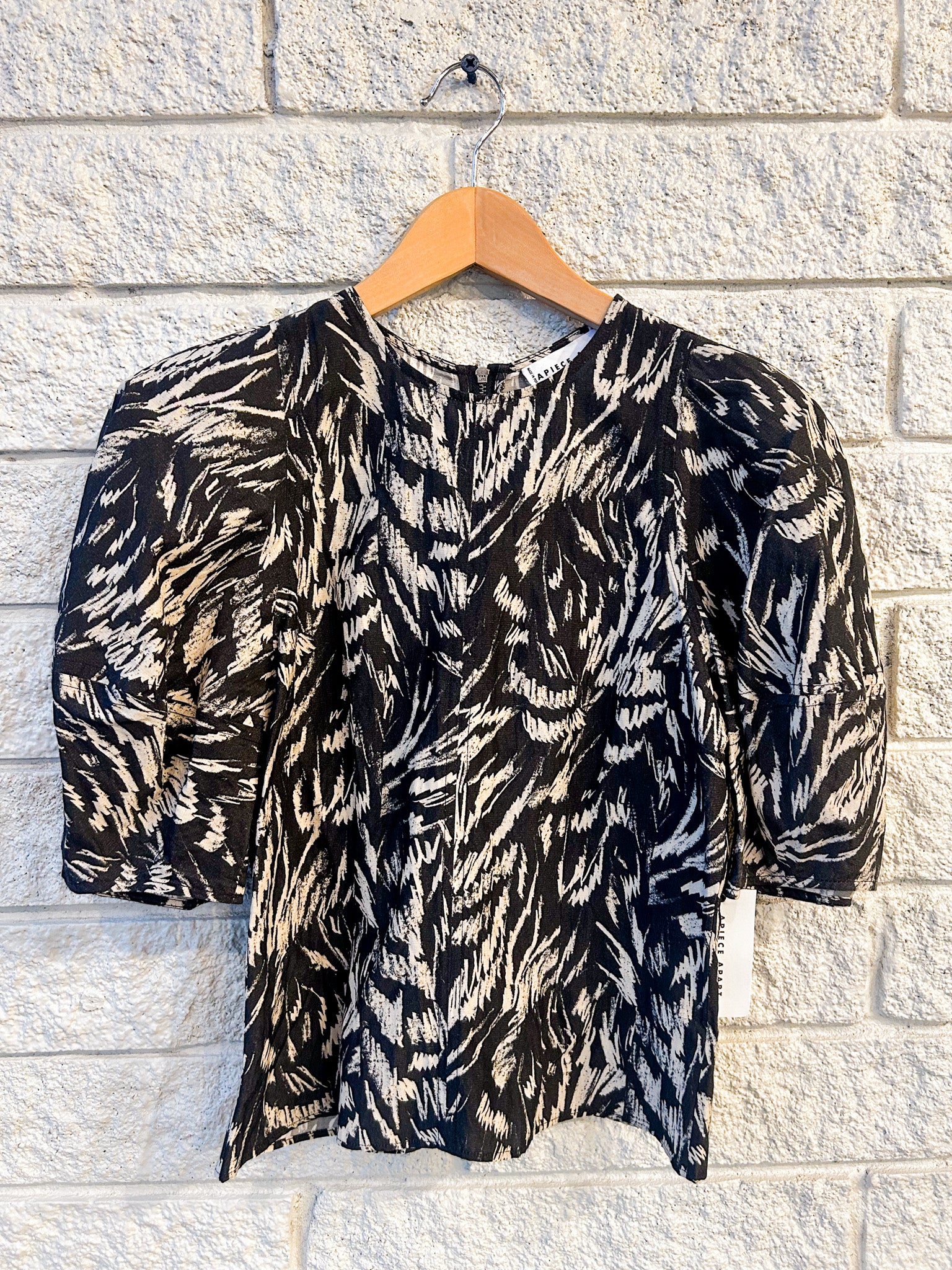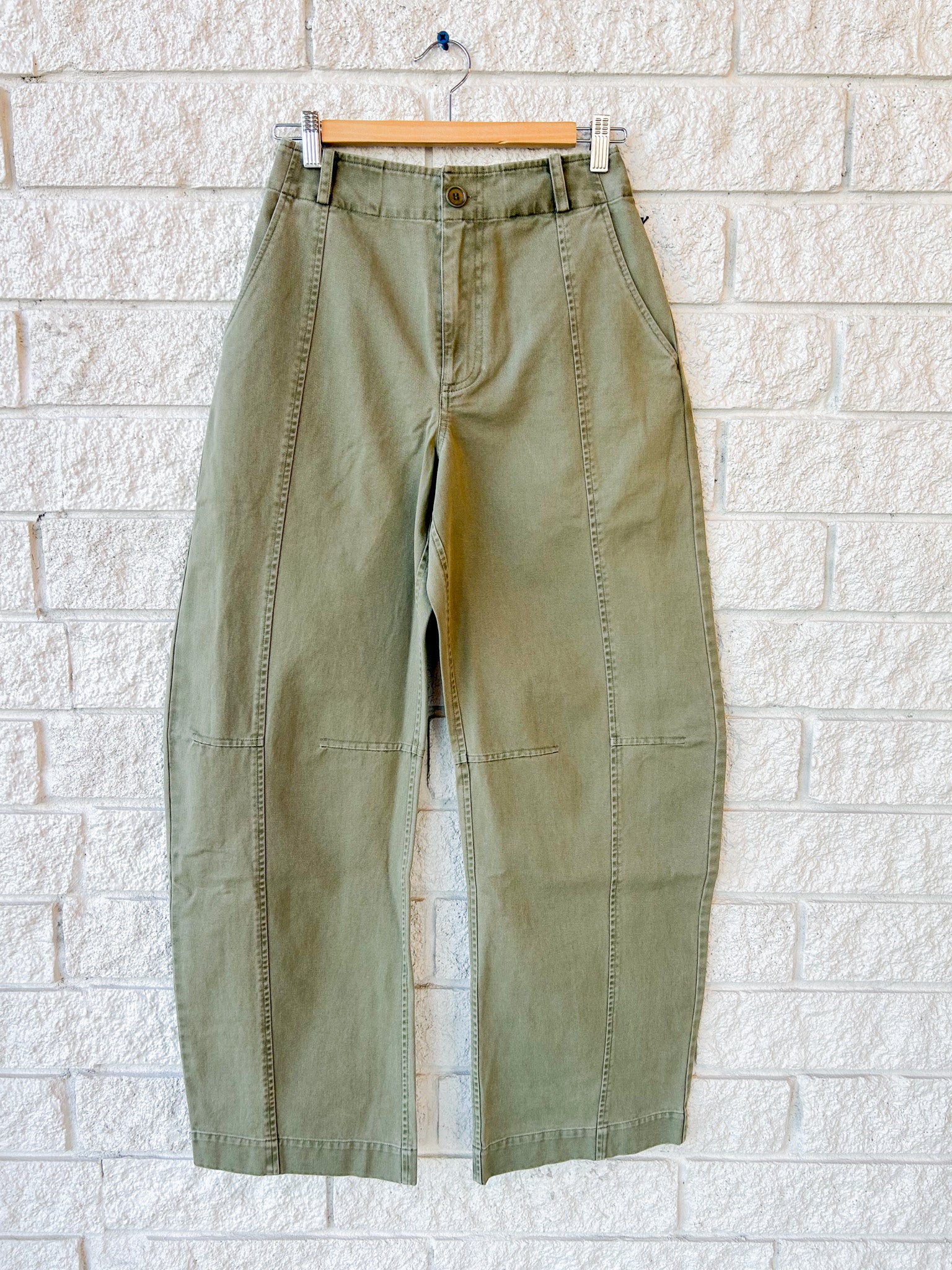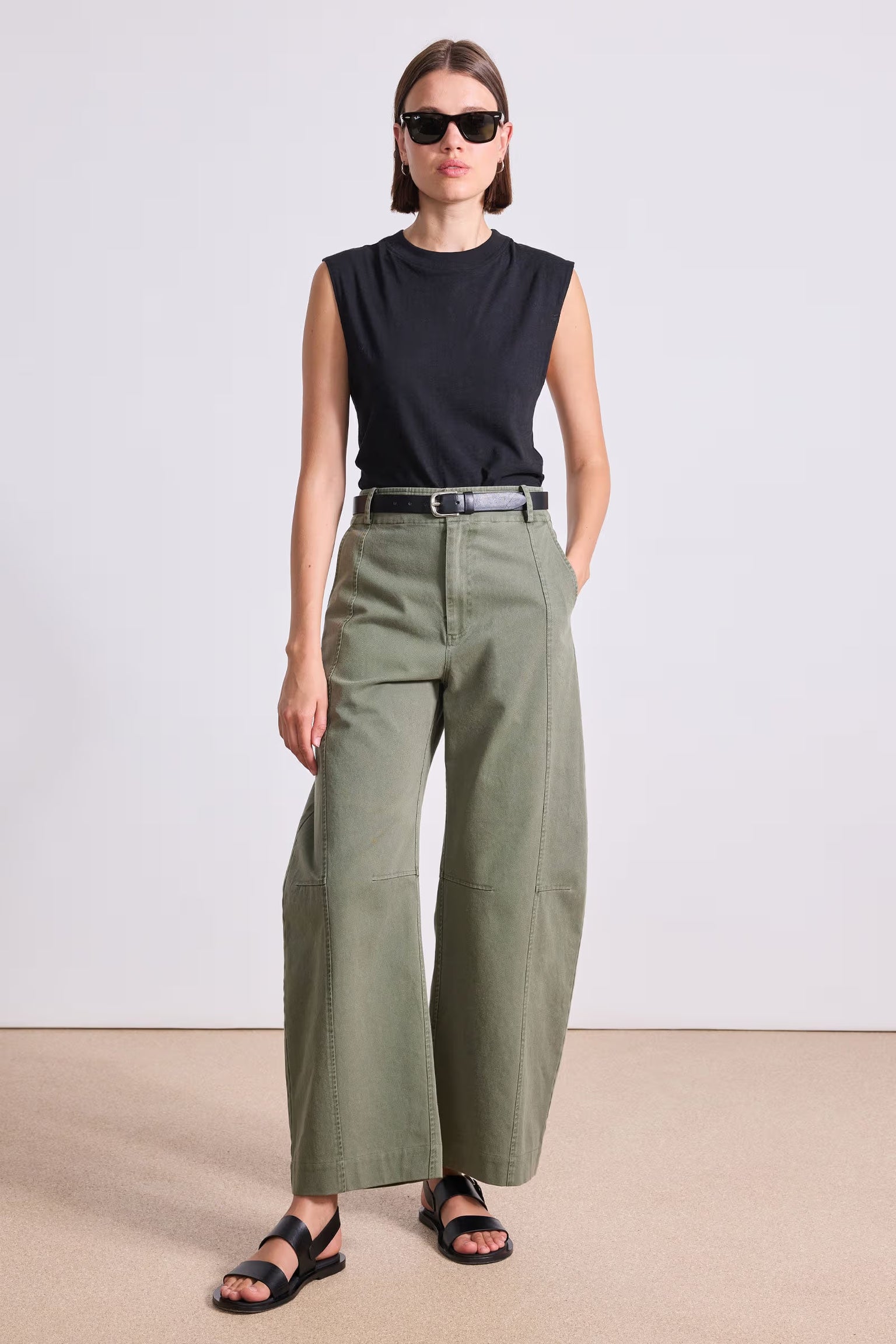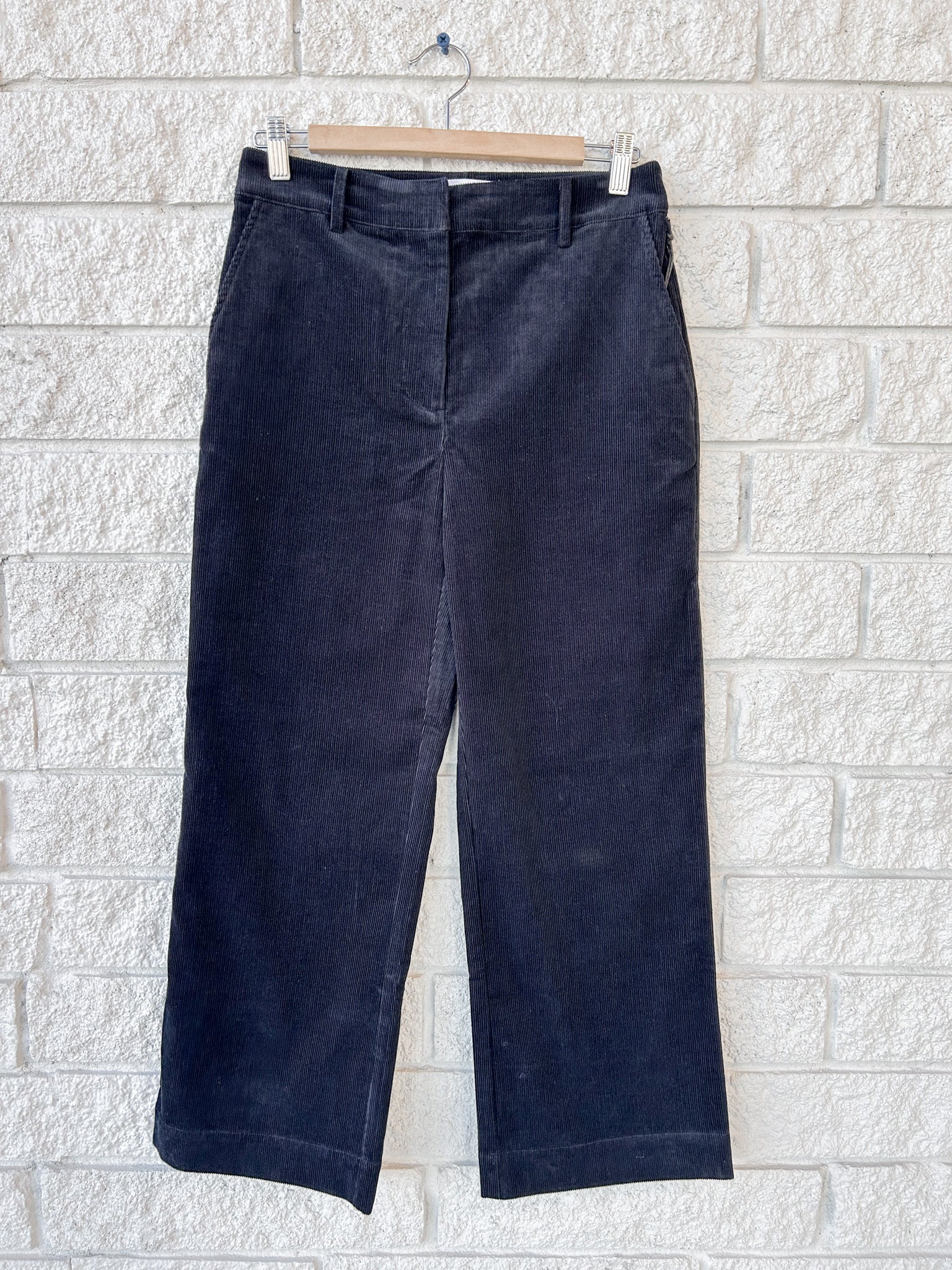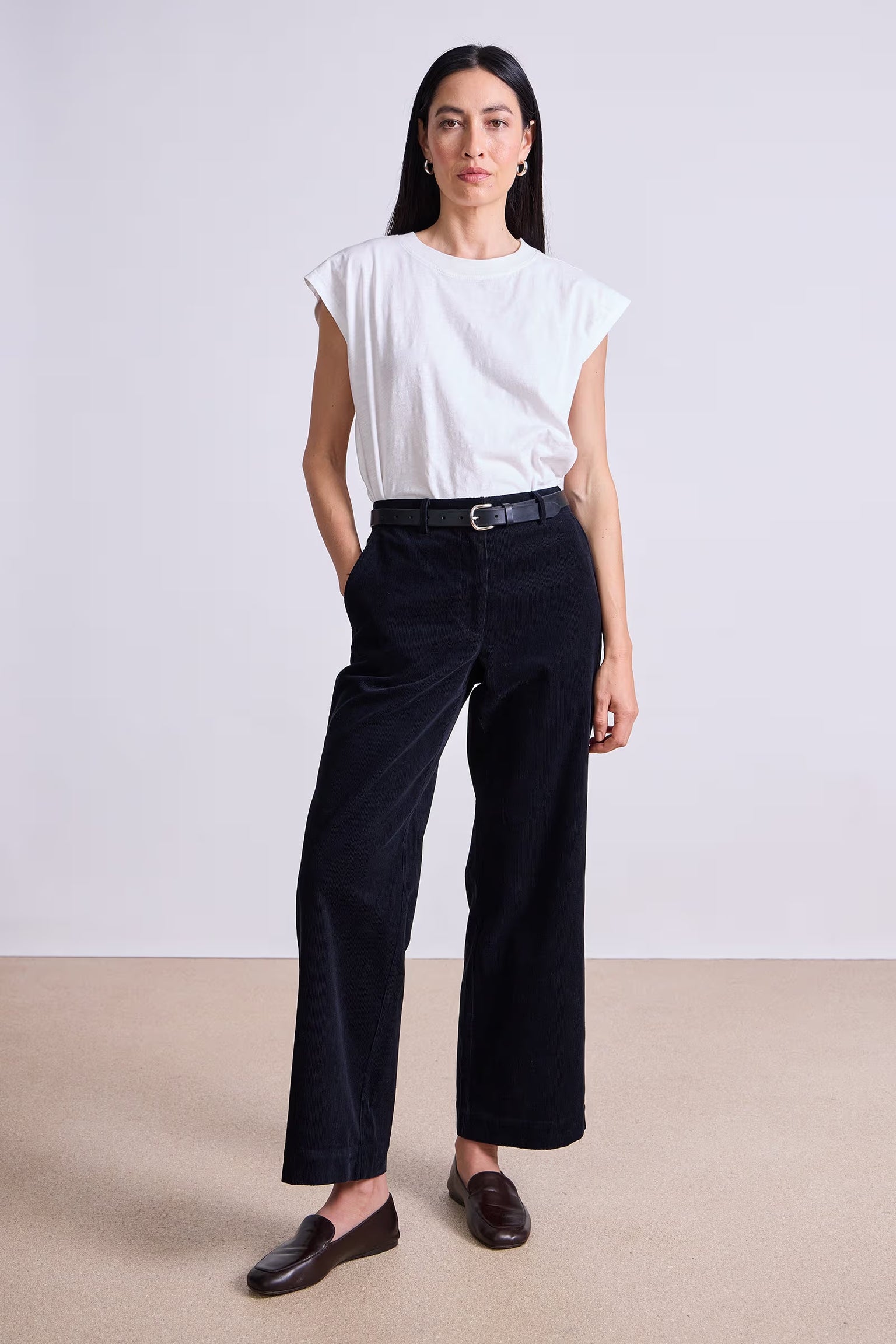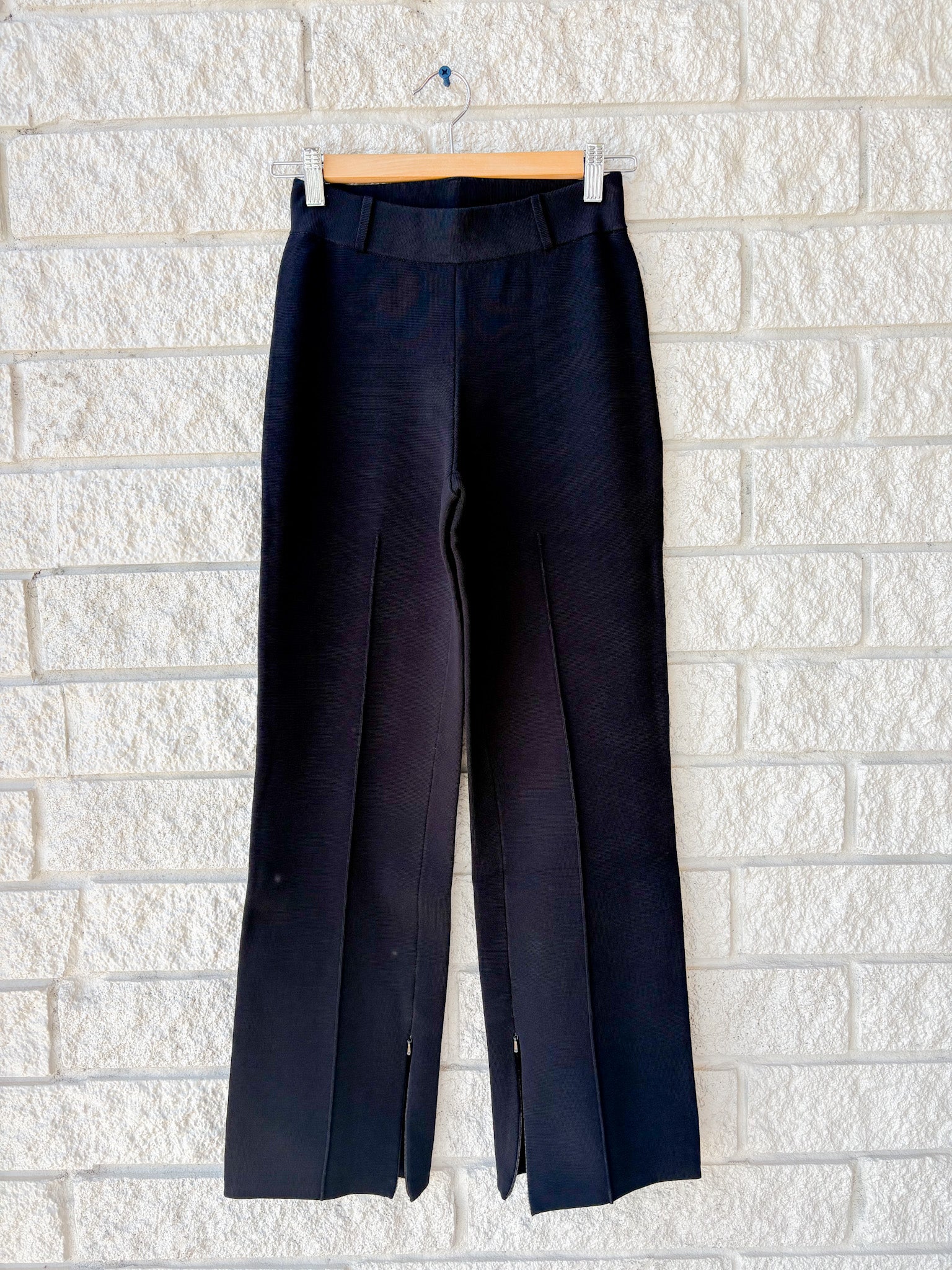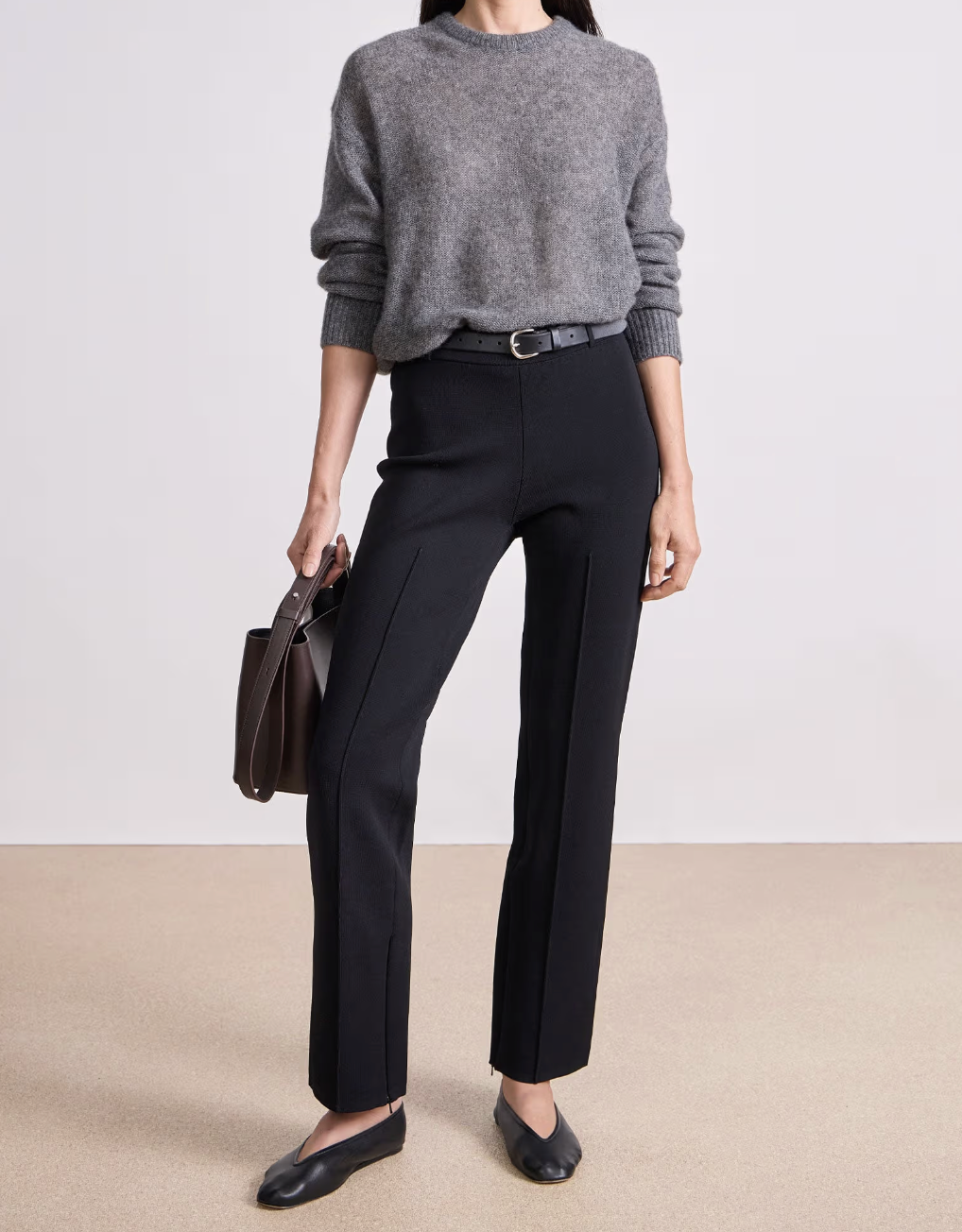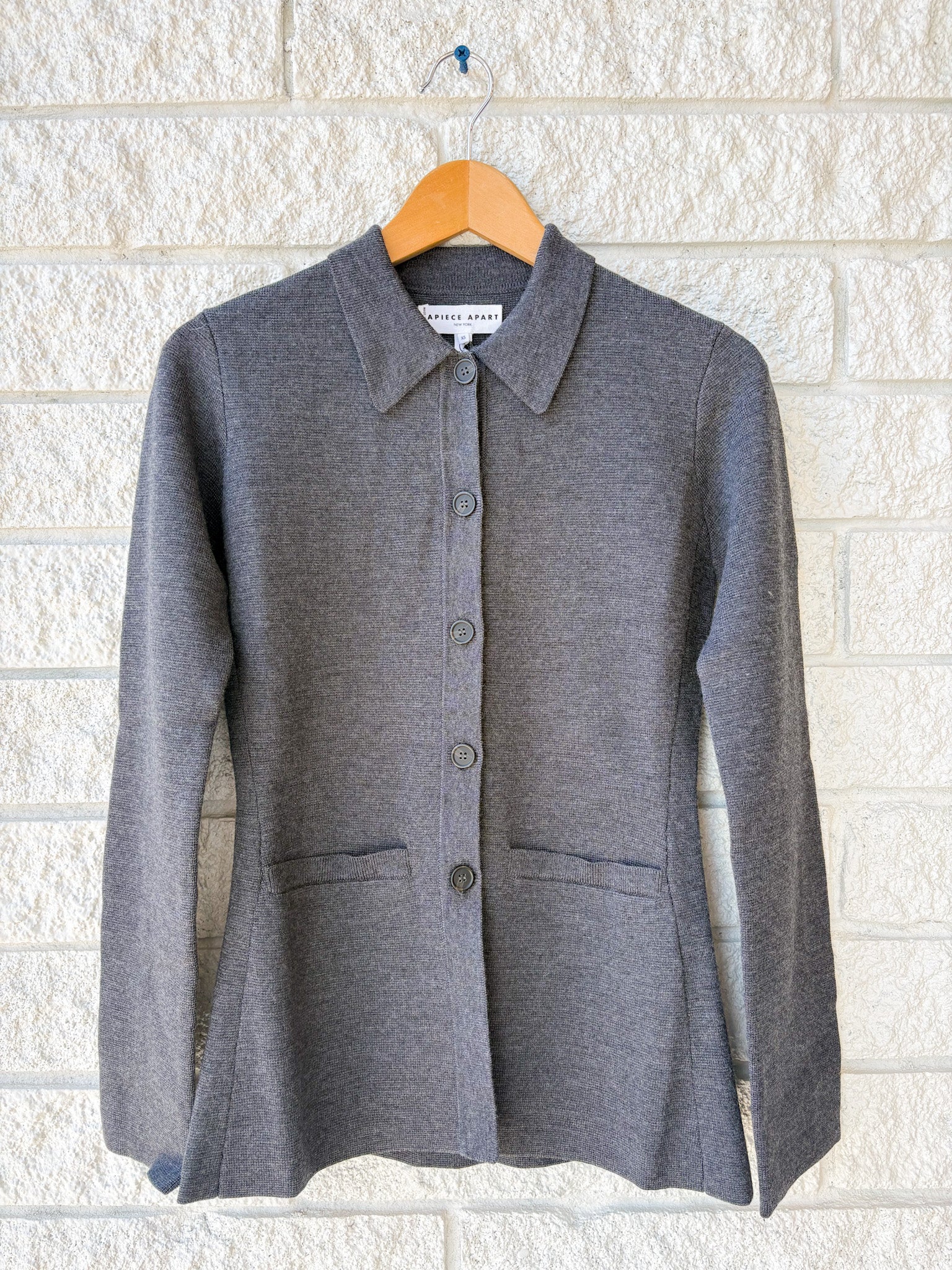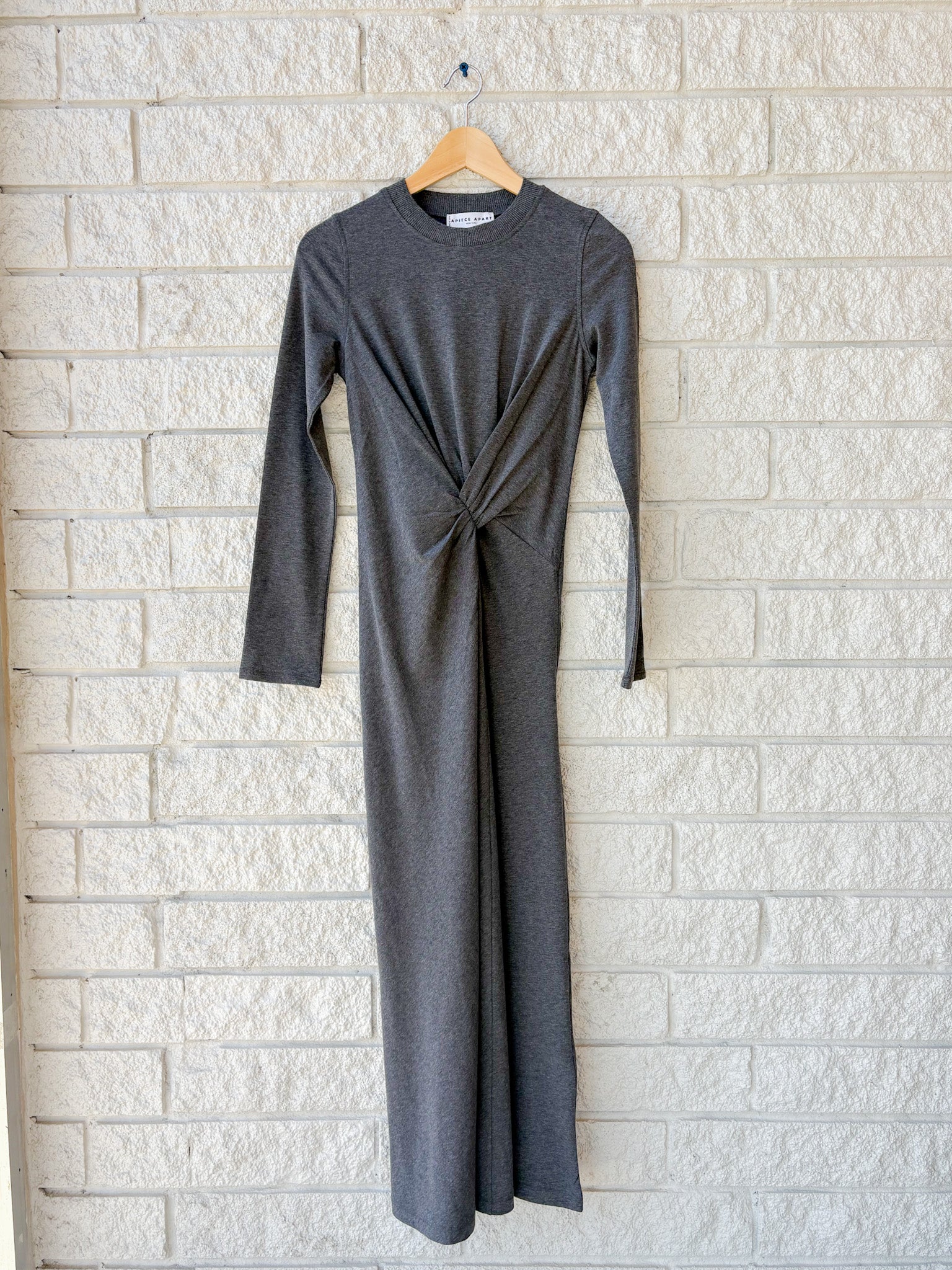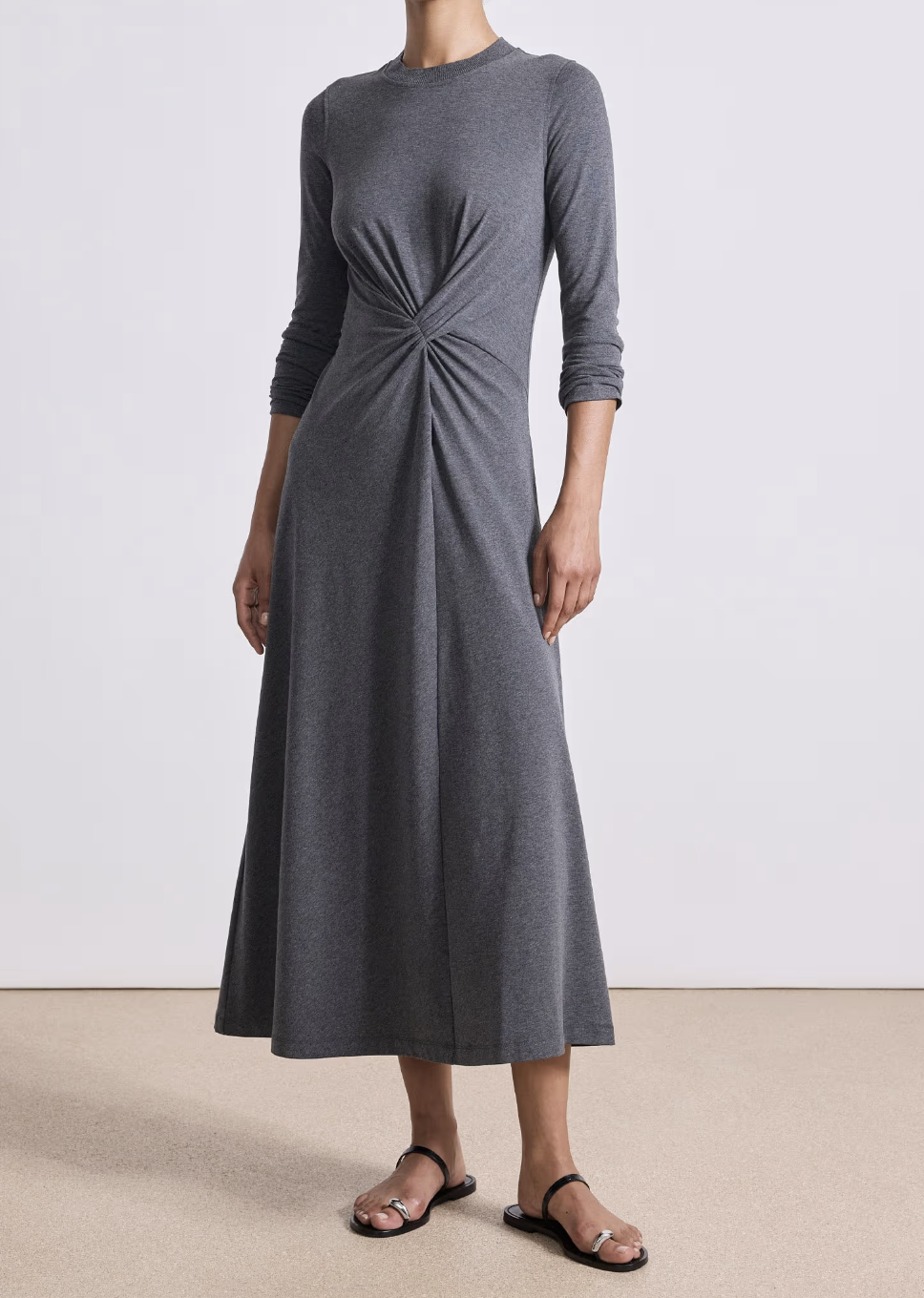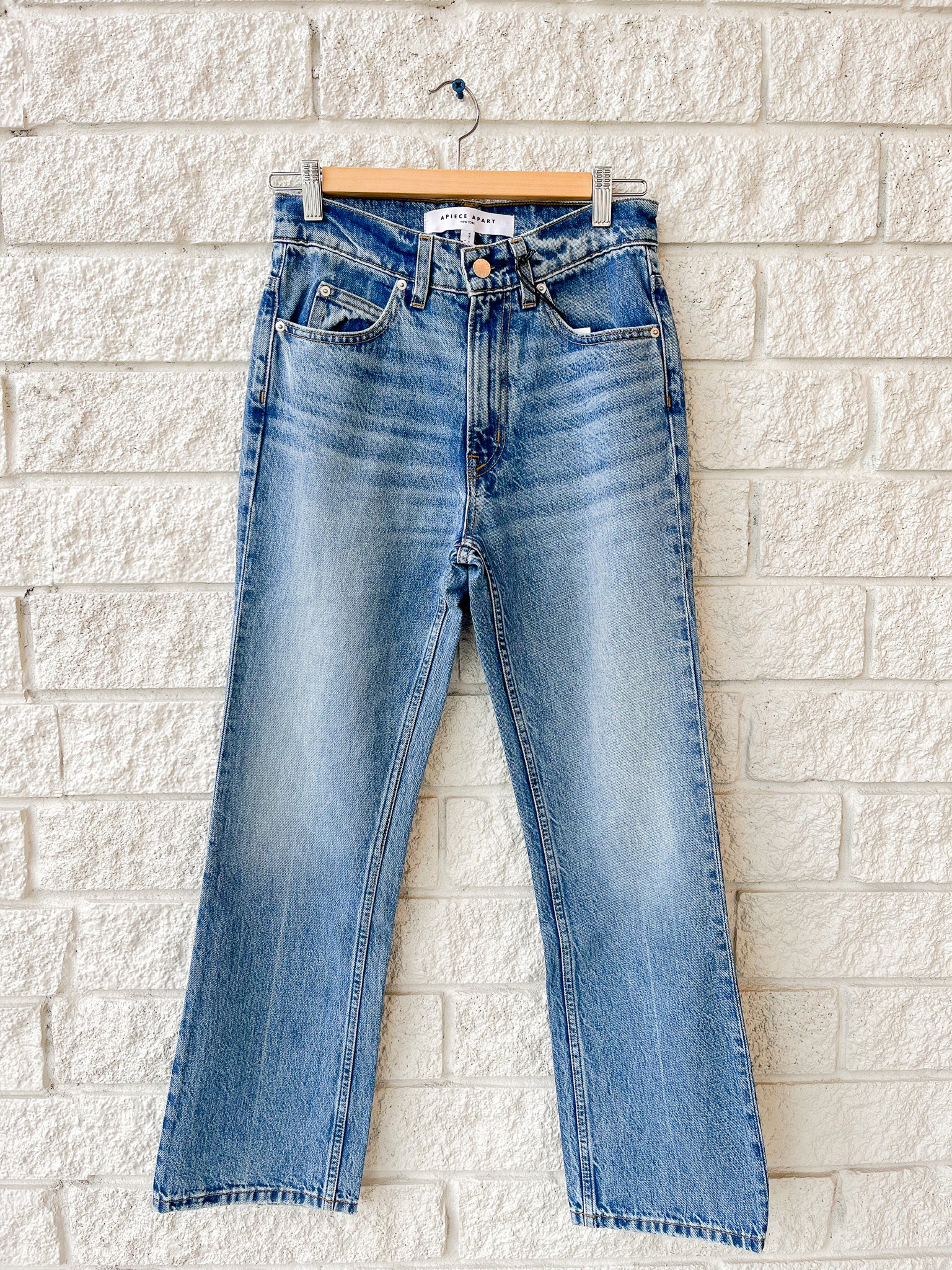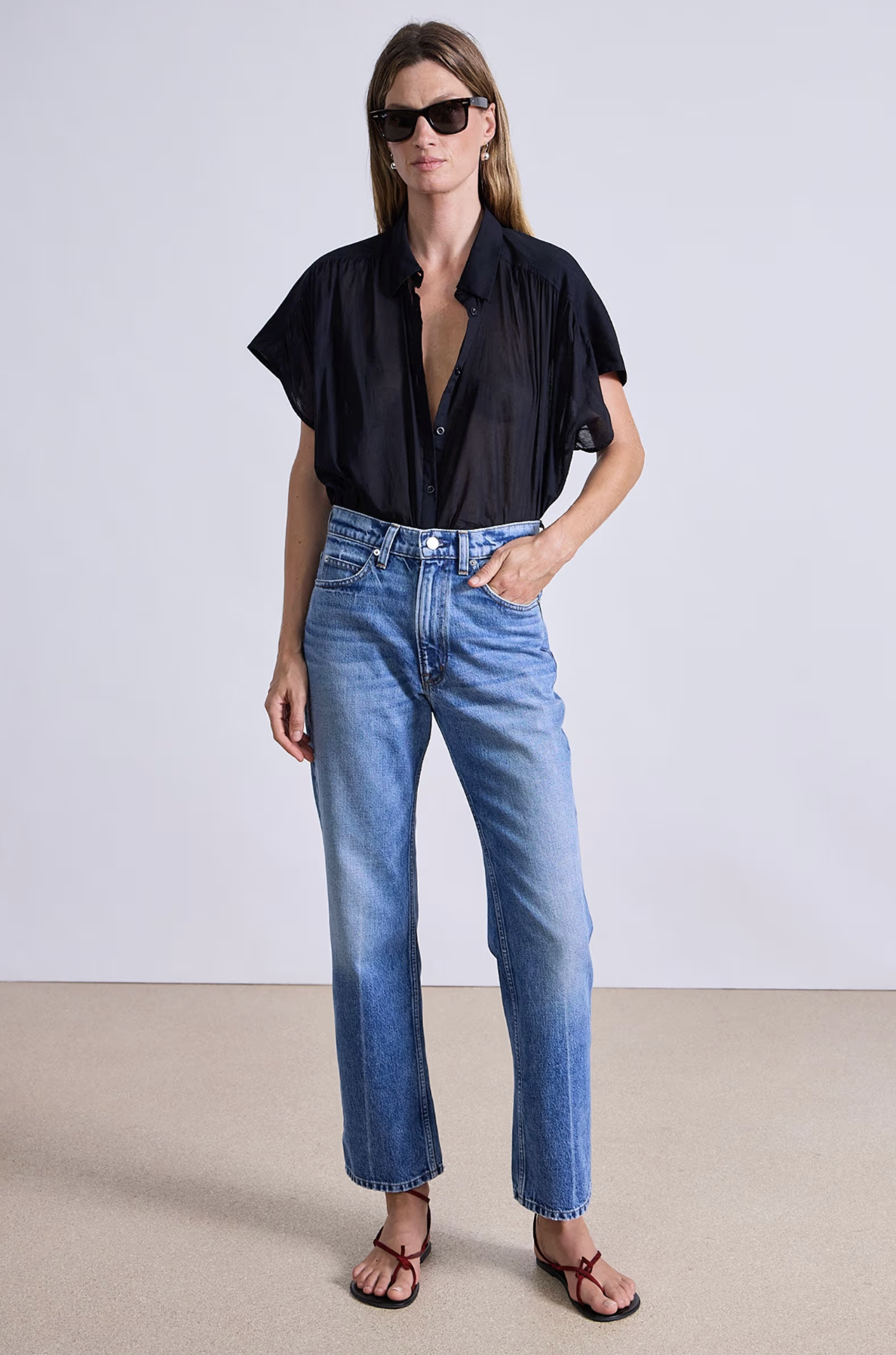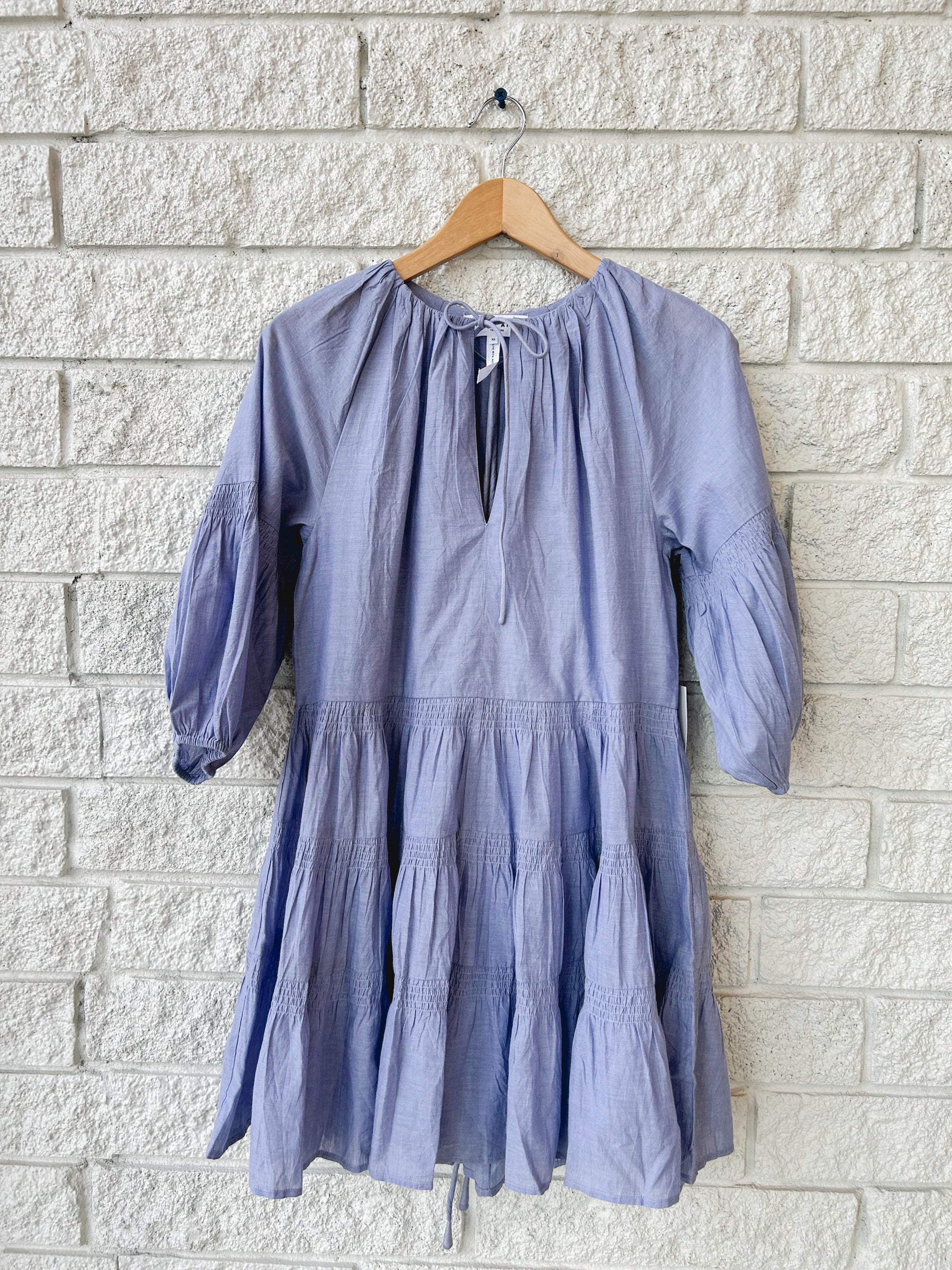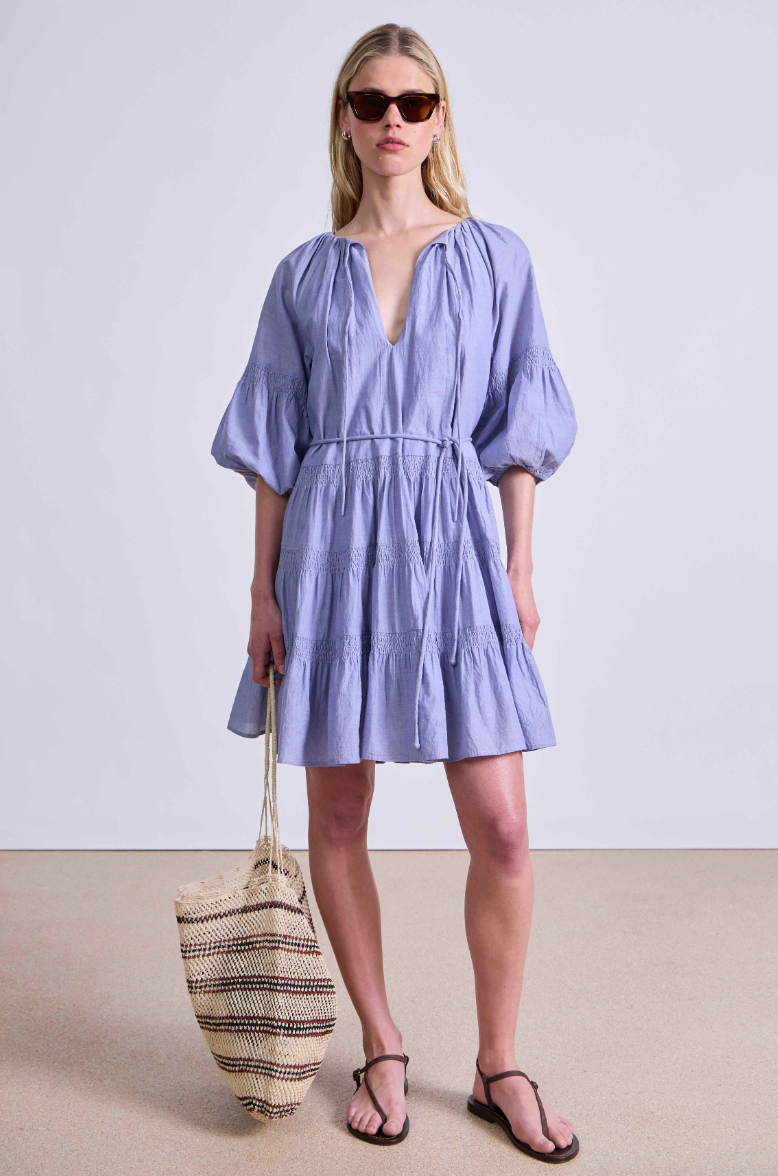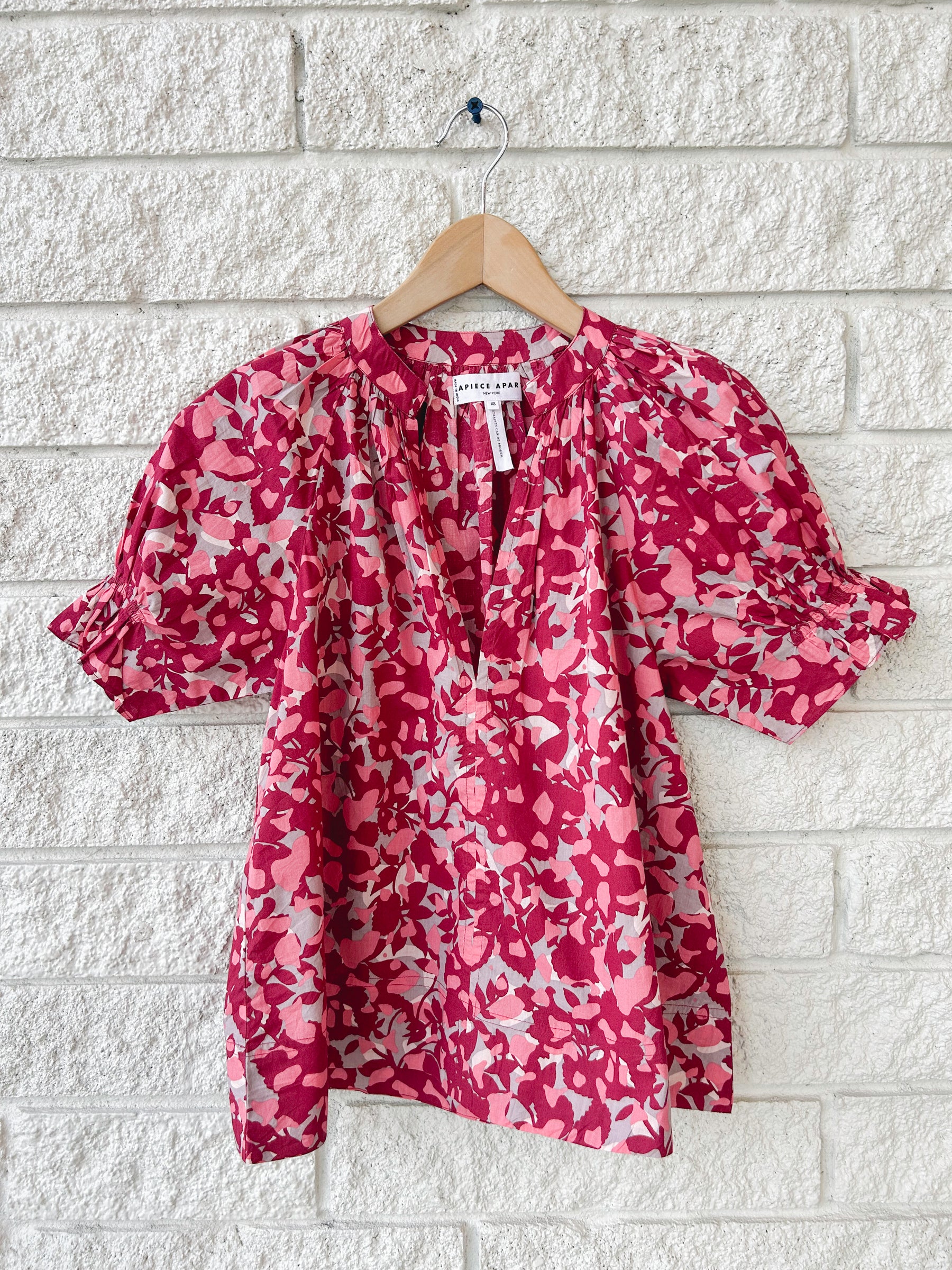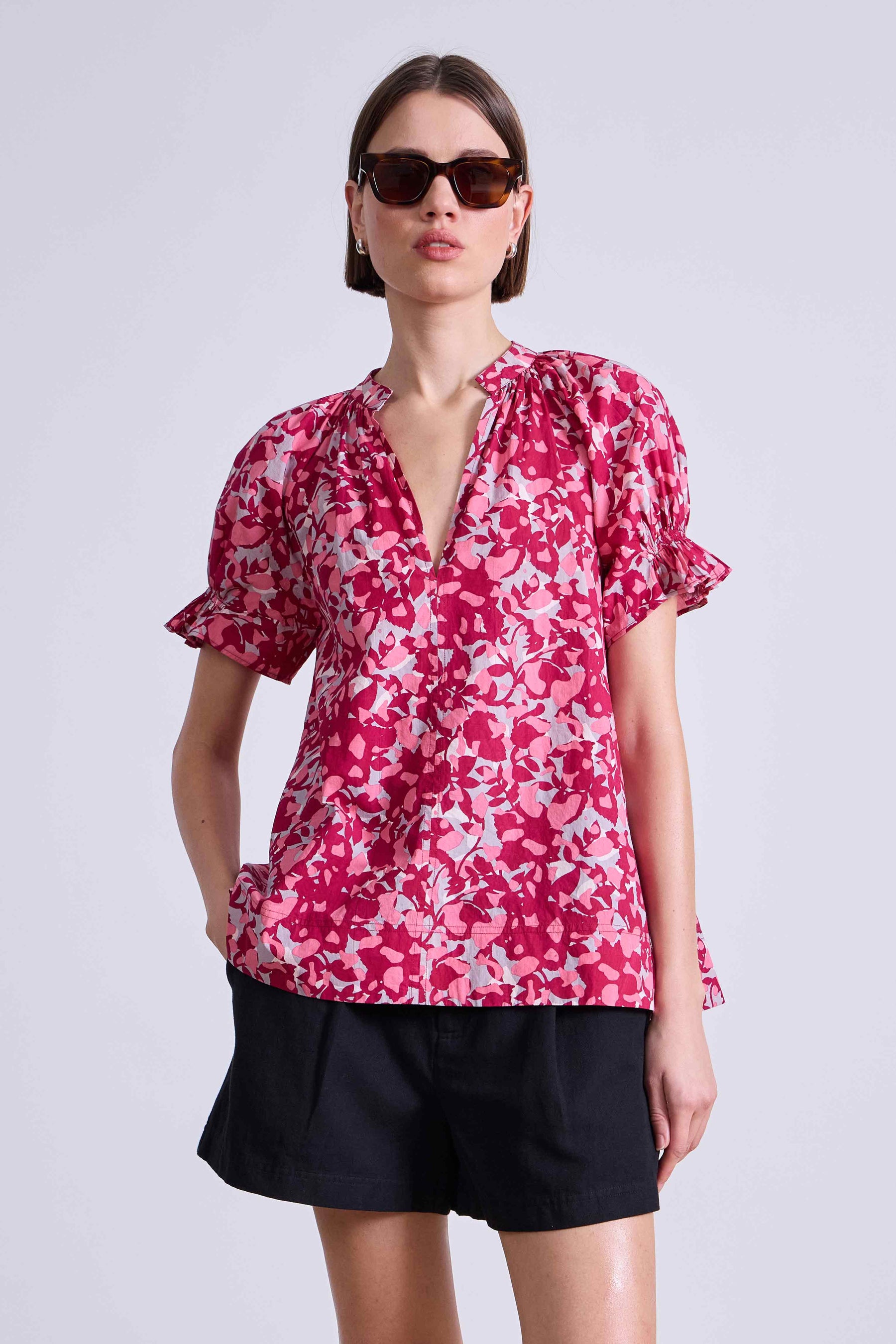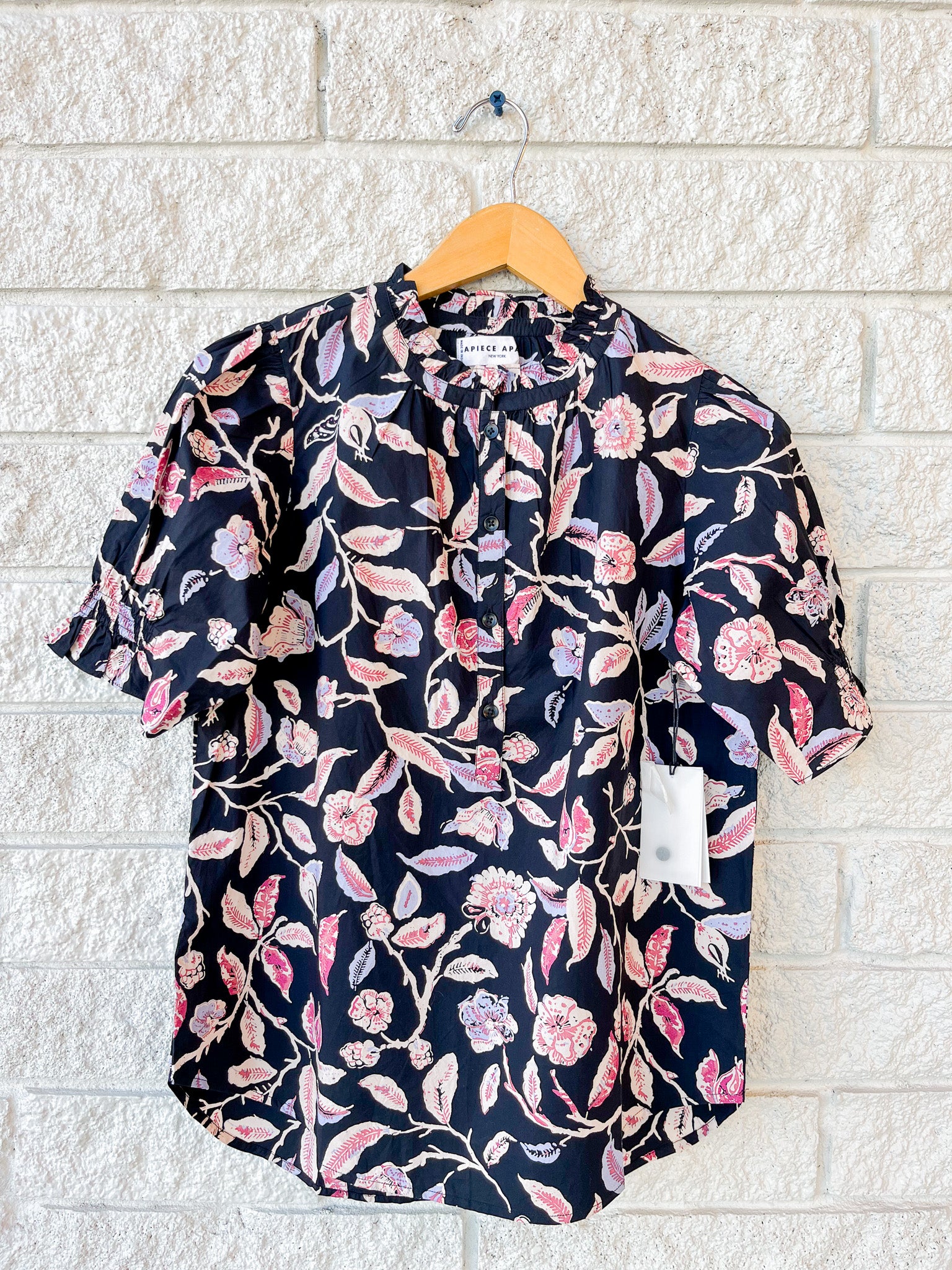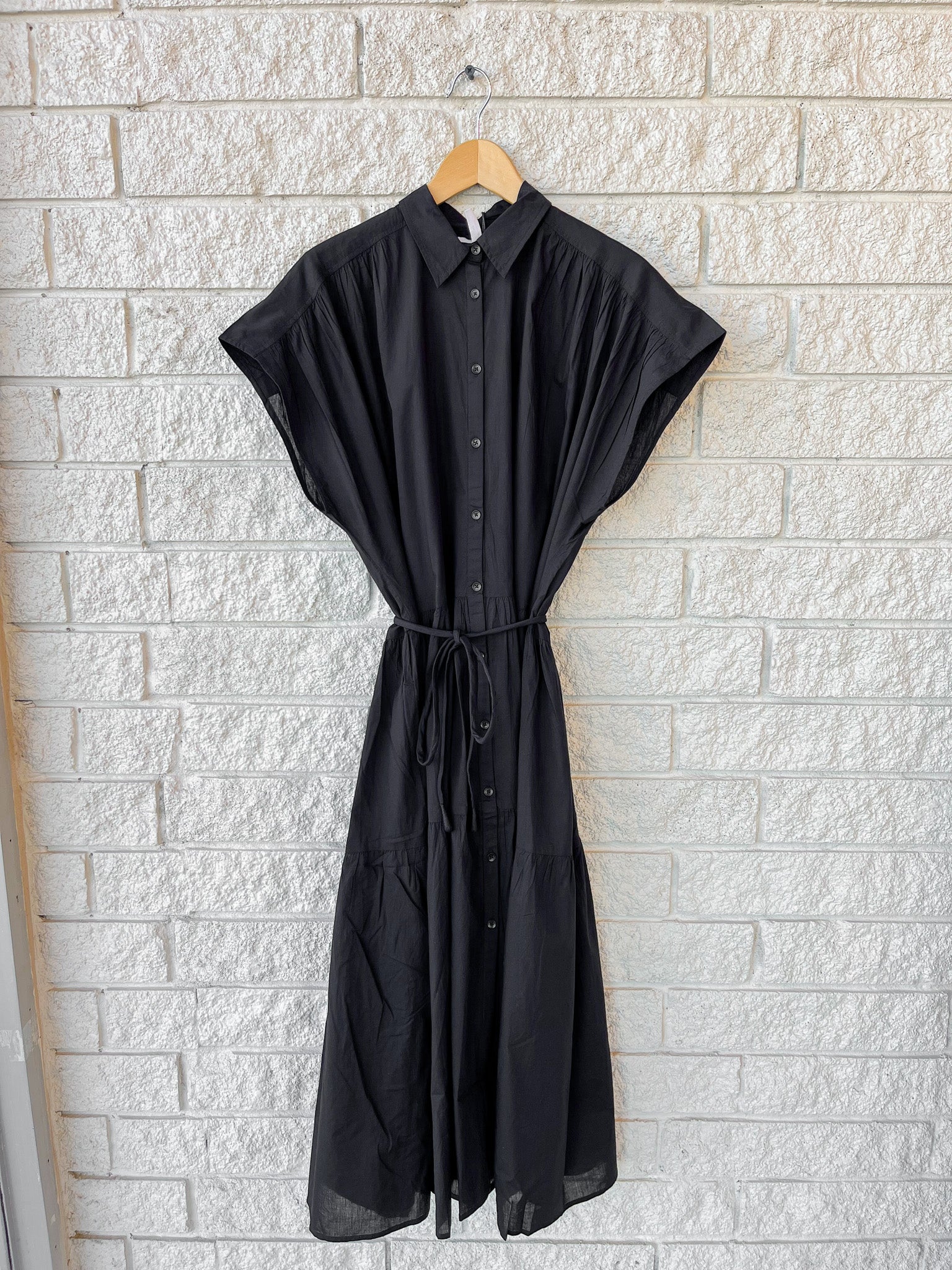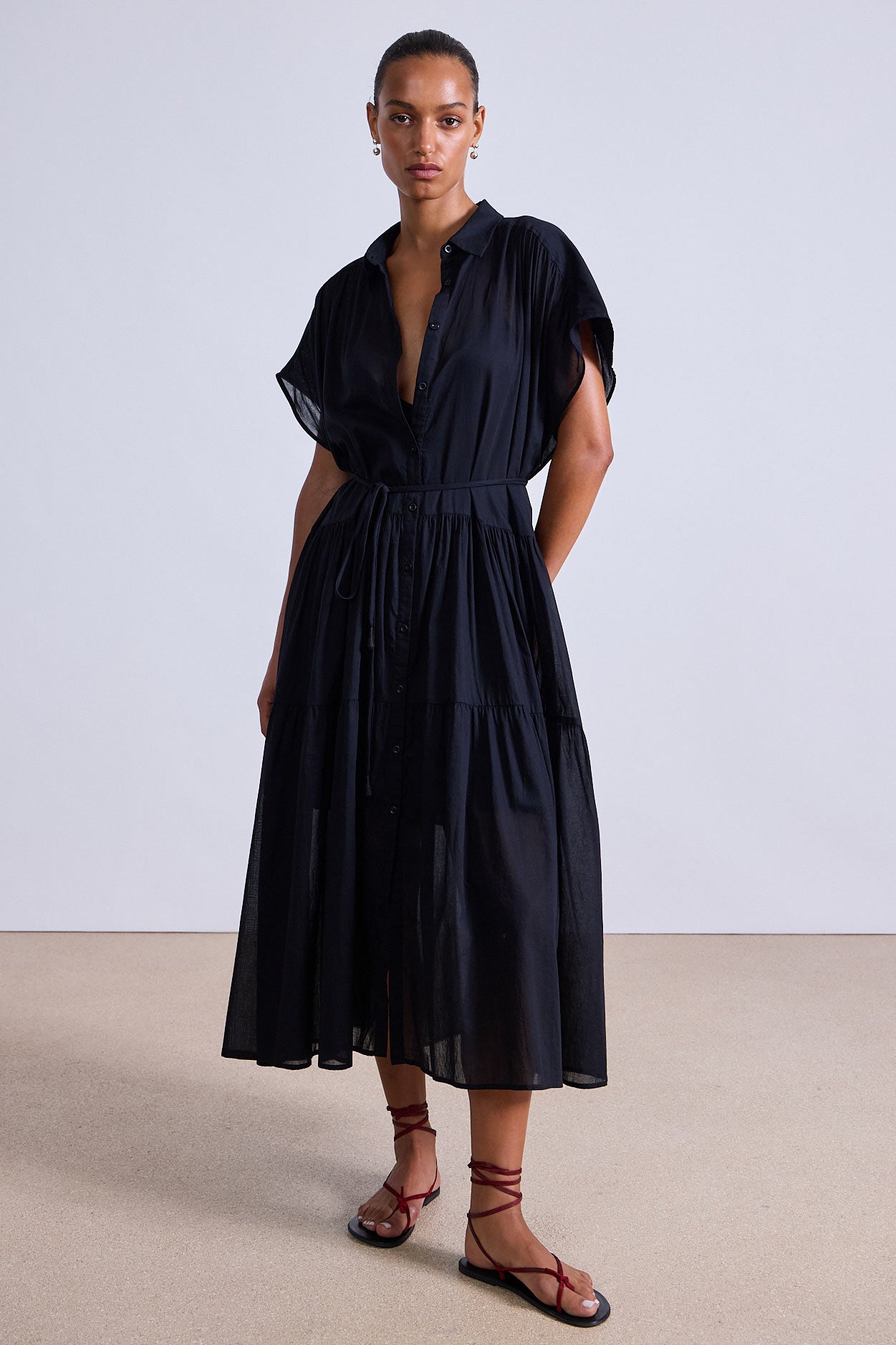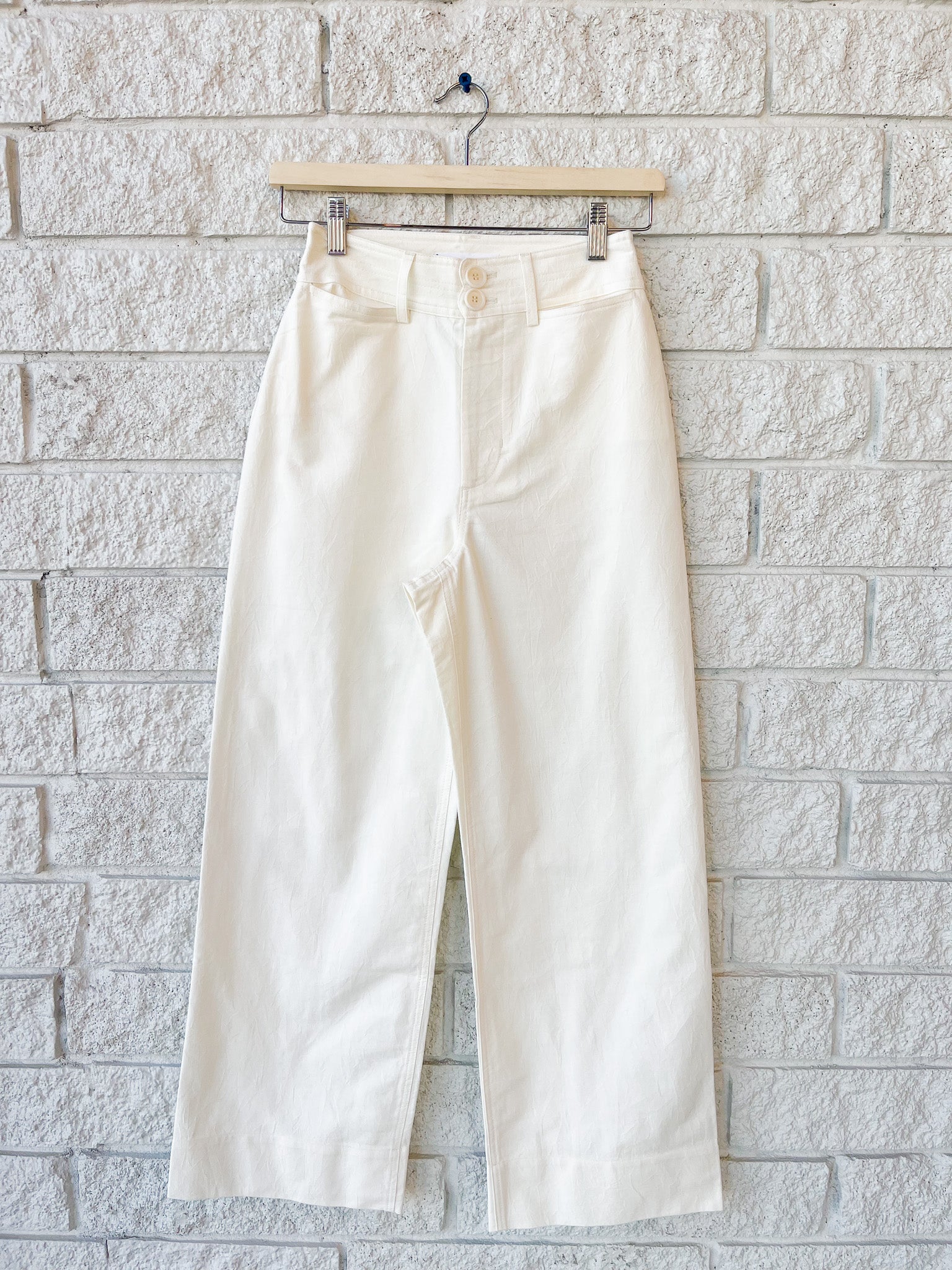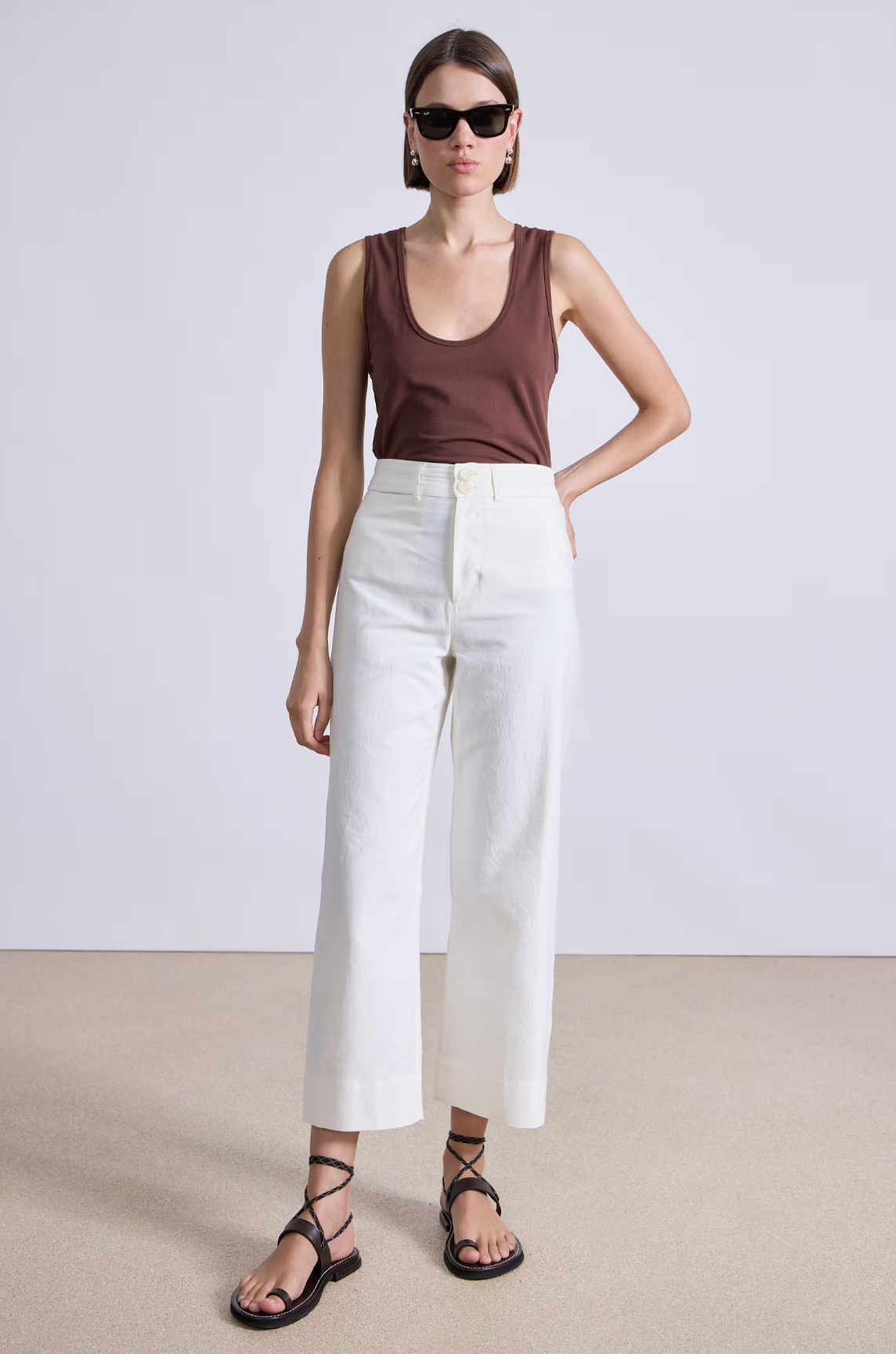APIECE APART
Sort by
Filters
Apiece Apart
Apiece Apart was founded by a couple of designers, Starr Hout and Laura Cramer, who went on a trip for their thirtieth birthdays and found themselves wishing for a collection of simple pieces that could fit into any carry-on bag. The line of clothing that became Apiece Apart combines classic styles with contemporary silhouettes to create a full array of sophisticated, easy pieces to mix and match.
The Apiece Apart line creates classic, timeless garments that are made to last. The brand Apiece Apart transcends fast fashion and trend cycles, and is designed to last for years of wear. Apiece Apart sources raw materials and works with high-quality manufacturers to produce garments that have the longest possible lives.
Apiece Apart Ethics
Whenever possible, Apiece Apart prioritizes organic, ethically sourced and biodegradable fabrics and natural fibers such as silk, linen, and alpaca. Apiece Apart aims to reduce waste in their production processes, with every Apiece Apart collection cut-to-order. In this way, Apiece Apart has little leftover inventory at the end of each season. Apiece Apart produces their collections in small batches with the goal of selling them out.
Once manufactured, Apiece Apart garments are packaged and stored in TIPA compostable bags in an effort to reduce the use of plastic. Clothing items by Apiece Apart are never shipped on plastic hangers because this makes shipping more efficient while reducing carbon emissions.
Apiece Apart Fabrics
The fabrics sourced by Apiece Apart are carefully selected for their environmental impact as well as their drape and luxury feel. Linen is a favorite used by Apiece Apart, as it is a biodegradable fiber made from the flax plant, which is frequently grown without chemical fertilizers or pesticides. Flax also requires less water and energy to grow than other materials like cotton or polyester, fitting nicely with Apiece Apart’s ethics. Linen is also an excellent choice for Apiece Apart garments because it helps keep the body cool and over time, softens with washing and wearing.
Plant-based Fabrics at Apiece Apart
The cotton used by Apiece Apart in their garments and sew-in labels is GOTS certified organic. This cotton Apiece Apart uses is grown in India, without synthetic pesticides or fertilizers, and needs less water than non-organic cotton. Apiece Apart sources this Indian cotton to ensure they are getting the quality Apiece Apart requires of their fabrics.
Apiece Apart also uses Tencel, which is made from sustainably sourced wood pulp that is biodegradable. The fabric is lightweight, soft, wrinkle-resistant, and moisture-wicking with a smooth finish that drapes the body flatteringly and fits well with Apiece Apart’s aesthetic.
Animal-based Fabrics at Apiece Apart
The alpaca Apiece Apart uses is a soft, durable fiber that is woven to outlast wool or cashmere. Apiece Apart’s alpaca is sourced from Peru, from producers who take care not to harm the animals while shearing them.
Leather and shearling used in Apiece Apart’s items are produced in Turkey from materials that are by-products of the meat industry.
Apiece Apart Production
Most Apiece Apart printed garments are created by digitally printing fabric with colors and patterns using special inks as opposed to the synthetic dyes used in traditional screen printing. The digital printing process at Apiece Apart also reduces water waste because this method requires fewer rinse cycles than screen printing.
Labels sewn into Apiece Apart garments are made from 100% organic cotton; Apiece Apart’s hangtags are made out of 80% post-consumer material, printed with soy-based ink, and 100% recyclable and biodegradable. Apiece Apart does not use plastic buttons, and instead, garment closures are reusable copper shanks, or natural shell or corozo buttons, which are recyclable.
The brand Apiece Apart maintains long-term relationships with factory owners and artisans in their supply chain. Garments for Apiece Apart are manufactured in India, China, Peru, Turkey, and the U.S. Manufacturing locations for Apiece Apart are selected based on each factory’s individual strengths, skill sets, and practices. Apiece Apart also takes into account proximity of raw materials to the factory in efforts to reduce or eliminate long-distance shipping.
Apiece Apart Roadmap
Apiece Apart has grown a lot since its inception, and has their sights on bigger things. By the end of 2022, Apiece Apart aims for at least 75% of their fabrics to be organic or environmentally responsible. By 2025, Apiece Apart expects to offer a fully transparent supply chain that shows the production of their products from seed, to farm, to factory, to consumer.
Apiece Apart aims to incorporate regenerative fibers into their supply chain. Apiece Apart wants to work with suppliers and farms that use techniques that respect, restore, and replenish nature.
Apiece Apart at Prefontaine
Prefontaine carries a lovely selection of Apiece Apart in a variety of styles and colors. We have their simple and yet iconic Apiece Apart pants, tops and dresses, and a few accessory pieces that bring some levity and humor to their simple elegance.
Elevate Your Wardrobe with Contemporary Classics from Apiece Apart
Elevating your wardrobe with contemporary classics is a great way to refresh your style and feel inspired by new fashion trends. One perfect brand for achieving this is Apiece Apart, known for creating timeless designs that mix modern and traditional aesthetics. Their pieces are beautifully crafted and designed to be versatile, making it easy to wear them in multiple ways. Whether you want a statement dress or a chic blouse, Apiece Apart has you covered. By investing in these contemporary classics, you can create a fashionable and practical wardrobe, allowing you to look and feel your best every day.
Upgrade your wardrobe with contemporary classics and enhance your style. A well-curated wardrobe doesn't have to be complicated, especially when you have APiece Apart as your go-to brand. Their timeless pieces are designed with the contemporary woman in mind, blending clean lines and versatile silhouettes to create pieces that can be dressed up or down. Apiece Apart's collections boast elevated basics, making them the perfect foundation for any outfit. From tailored blazers to easy-to-wear jumpsuits, their clothing is made to last and transcend seasons. It's time to elevate your wardrobe and embrace timeless style with APiece Apart.
When it comes to wardrobe essentials, there's a reason why certain items withstand the test of time. While fashion trends may come and go, there are classic pieces that offer versatility and style year after year. Elevate your wardrobe with contemporary classics, like those provided by Apiece Apart. From elegant midi dresses to tailored blazers, their pieces are designed to mix and match your existing wardrobe effortlessly. Whether you're dressing for the office, a weekend brunch, or a night out, these timeless pieces are the perfect foundation for any outfit. So invest in quality, statement-making staples that will elevate your wardrobe for years.
Elevate Your Wardrobe with Apiece Apart At Prefontaine Shop
Apiece Apart is a renowned fashion label celebrated for its exquisite blend of bohemian spirit and contemporary elegance. At Prefontaine Shop, we're proud to offer a carefully curated selection of Apiece Apart clothing that embodies the brand's signature style and impeccable quality. Beyond just aesthetics, Apiece Apart's collection is designed for the modern woman, infusing practicality with sartorial sophistication.
Born from a desire to simplify wardrobes with pieces that mix and match effortlessly, Apiece Apart has evolved into a go-to brand for understated yet striking fashion statements. This unique vision ensures every piece from their collection enhances your style your entire wardrobe experience.
Apiece Apart Dresses: Timeless and Effortless
Apiece Apart dresses are the epitome of feminine grace and versatility. From breezy summer styles to sophisticated evening wear, our collection offers something for every occasion.
Las Alturas Mini Dress ($395.00)
This flirty mini dress features a tiered silhouette and delicate embroidery, perfect for a day of shopping or a night out.
Catania Wrap Mini Dress ($385.00)
Embrace effortless chic with this wrap-style mini dress. The flattering silhouette and vibrant colors make it a wardrobe staple.
Los Altos Top ($295.00)
The Los Altos Top offers a perfect blend of comfort and style for the modern woman. This versatile piece features a relaxed fit that drapes beautifully over the body, making it suitable for various body types. Pair it with jeans for a laid-back look or dress it up with a skirt for more formal occasions.
Caminitas Puff Sleeve Top ($285.00)
The Caminitas Puff Sleeve Top brings any wardrobe a romantic and feminine flair. Its standout feature is the voluminous puff sleeves, which add drama and vintage-inspired charm to the silhouette. It can easily transition day to night, looking equally chic with casual denim or a sleek pencil skirt for evening wear.
Ori Racer Linen Tank ($325.00)
The Ori Racer Linen Tank is a summer wardrobe essential that combines simplicity with sophistication. Crafted from high-quality linen, this tank offers exceptional breathability and a luxurious texture. The linen fabric makes it relaxed, perfect for achieving that effortless, breezy summer style.
Nora Asymmetric Maxi
The Nora Asymmetric Maxi dress is another best collection in Apiece Apart from making a statement of modern elegance. Its most striking feature is the asymmetric hemline, which creates a fluid, dynamic silhouette that moves beautifully with every step. The maxi length adds a touch of drama and sophistication, making it suitable for formal events or upscale casual occasions.
Apiece Apart Sweaters: Cozy and Chic
Indulge in supreme comfort and style with Apiece Apart sweaters. Our collection features cozy knitwear pieces perfect for layering or wearing solo.
Apiece Apart Pants: Versatile and Stylish
Elevate your everyday look with Apiece Apart pants. Our collection features a range of styles, from sleek and tailored to relaxed and bohemian.
These high-waisted jeans offer a flattering fit and effortless style. Perfect for both casual and dressed-up occasions.
Styling Tips for Apiece Apart
Tip 1. Embrace layering:
Apiece Apart pieces are perfect for layering. Experiment with different combinations of textures, colors, and lengths. This technique adds depth and interest to your outfits, allowing for versatility and adjustment to different weather conditions.
Tip 2. Play with proportions:
Balance out oversized pieces with fitted items, and vice versa. This creates a dynamic and harmonious look that accentuates your best features while ensuring comfort and style. It's all about finding the right balance that works for your body type.
Tip 3. Don't be afraid to mix and match:
Combine different prints and patterns for a bold and eclectic look. This approach brings highlights your personal style. It can turn an ordinary outfit into a statement-making ensemble. Remember, the key is to find a common color or theme to tie the look together.
Tip 4. Invest in quality footwear:
The right shoes can make or break an outfit. Choose footwear that complements your overall look. Quality shoes not only elevate your outfit but also provide comfort and durability. Consider the occasion and your outfit's color scheme when selecting shoes.
Browse Collection Now!
Discover the magic of Apiece Apart at Prefontaine Shop. Explore our curated collection and find the perfect pieces to elevate your style. With their timeless appeal and exceptional quality, Apiece Apart garments are an investment in effortless luxury.
Shop now and experience the Apiece Apart difference.

